
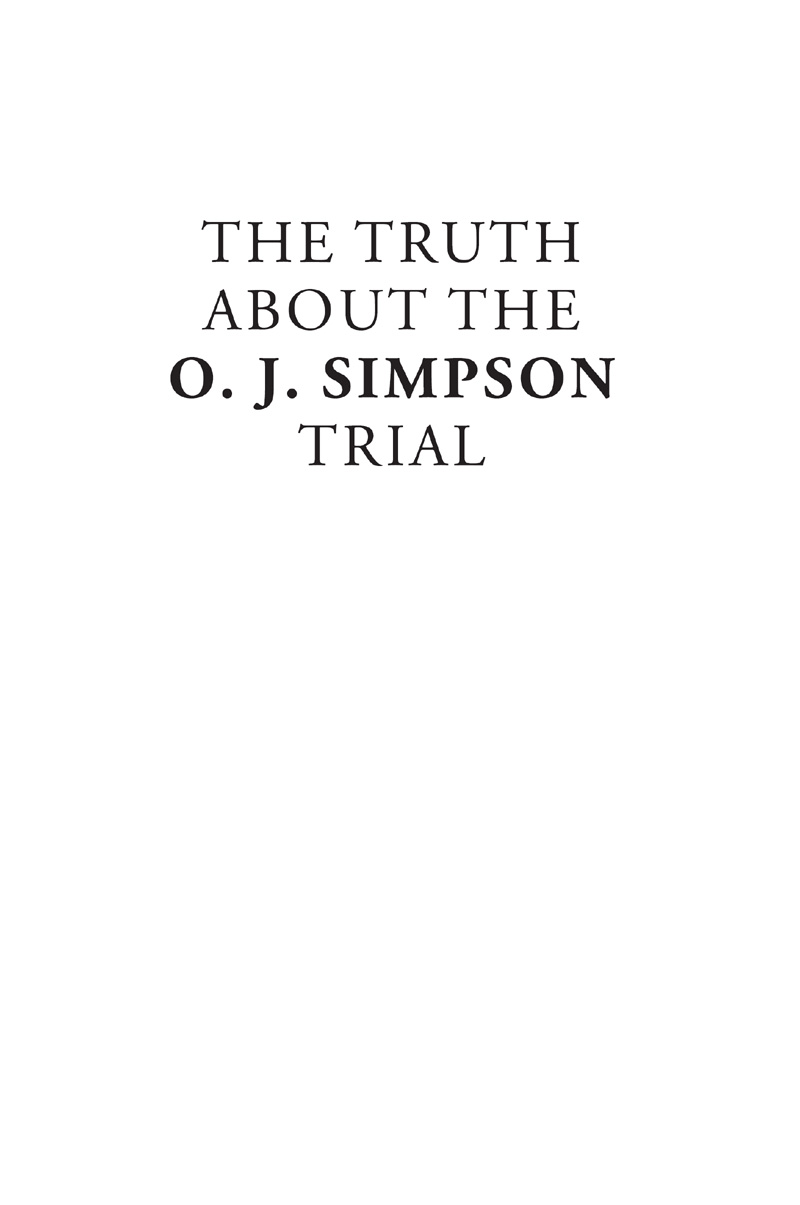
Other books by F. Lee Bailey
The Defense Never Rests, 1971.
For the Defense, 1975.
Cleared for the Approach, 1977.
Secrets, 1979.
To Be A Trial Lawyer, 1982.
Criminal Law Library (West), 11 Volumes.

Copyright 2021 by F. Lee Bailey
All rights reserved. No part of this book may be reproduced in any manner without the express written consent of the publisher, except in the case of brief excerpts in critical reviews or articles. All inquiries should be addressed to Arcade Publishing, 307 West 36th Street, 11th Floor, New York, NY 10018.
Skyhorse Publishing books may be purchased in bulk at special discounts for sales promotion, corporate gifts, fund-raising, or educational purposes. Special editions can also be created to specifications. For details, contact the Special Sales Department, Arcade Publishing, 307 West 36th Street, 11th Floor, New York, NY 10018 or .
Skyhorse and Skyhorse Publishing is a registered trademark of Skyhorse Publishing, Inc., a Delaware corporation.
Visit our website at www.skyhorsepublishing.com.
10 9 8 7 6 5 4 3 2 1
Library of Congress Cataloging-in-Publication Data is available on file.
Cover design by Brian Peterson
Cover photograph by Getty Images
Print ISBN: 978-1-5107-6584-9
Ebook ISBN: 978-1-5107-6585-6
Printed in the United States of America
After sixty-five years of bumping heads and rubbing shoulders with genuine courtroom lawyers, I am pleased to report that the United States has a good inventory of legal sharpshooters. Very few are a cut above the rest. Such a person is my friend Joseph J. Balliro, Sr., a Boston legal warrior, for more than seven decades. He has been a mentor, colleague, co-counsel, my lawyer and trusted advisor. This book is dedicated to him.
Contents
Foreword
I have had the honor of knowing F. Lee Bailey for several years. We first met more than two decades ago via a satellite video hookup on the CBS Early Show hosted by Bryant Gumbel. The topic was the notorious Boston Strangler case. Mr. Bailey had defended Albert Henry DeSalvo, the self-proclaimed Boston Strangler, while I was re-investigating the murder of my aunt, Mary Sullivan, who at nineteen years old was the youngest and last victim of the notorious 1960s murder spree. We sparred over our strong beliefs in the case, and as a young and cocky journalist, I admit that I was unwilling to entertain Lees assertion that DeSalvo had committed the murders.
It wasnt until years later, during a luncheon with Lee, which had been set up by a mutual friend, that I opened my mind to the evidence he presented, and more importantly, to his critical thinking. There is a reason that the name F. Lee Bailey is synonymous with jurisprudence in America. He is an iconic figure who is no-nonsense and completely unafraid to share his theories about a case he has been involved inwhich brings me to this book chronicling his work in the O. J. Simpson case.
Like many of you, I have read a number of different books and have watched several documentaries pointing to Simpsons guilt in the murders of his ex-wife Nicole Brown and Ronald Goldman. My mind was made up a long time ago. But, as an investigative journalist and true crime author, I figured it was my responsibility to read what Mr. Bailey had to say about the subject. After all, he was there as a member of Simpsons Dream Team, standing resolutely in the eye of the hurricane.
I read Lees book with a set of open eyes and I learned a great deal more about this celebrated murder case and the so-called Trial of the Century that followed. Bailey, who performed so brilliantly in the courtroom and behind the scenes in high profile cases, makes strong arguments here, which youll no doubt debate with others long after youve finished this book. No study of O. J. Simpson and the crimes that he has been accused of is complete without reading The Truth about the O. J. Simpson Trial.
Casey Sherman
New York Times, USA Today, and Wall Street Journal
best-selling author of Hunting Whitey: The Inside Story of the
Capture and Killing of America's Most Wanted Crime Boss.
Acknowledgments
I n most books published over the years, a nod of thanks is given by the author to those who chipped in in some way or another to the finished product. Some of these contributions have been admittedly modest. Not so in this case. My longtime friend and sometime co-author framed out the original story and got us around first base. John Greenya has written books with me before and is always a joy to work with.
The backbone of this talesomewhere between stainless steel and titaniumis Patrick McKenna, my chief investigator and valued friend. And he knows the case better than Donald Trump knows his coiffeur.
I am sad to say that although begun in November 2017, this manuscript had pretty much fallen by the wayside for more than two years. Then I began working with a young lady in early 2020 who expressed interest in bringing it back to life. She is articulate, has a stunning memory and a deep vocabulary. Within a short time, she had memorized the existing manuscript nearly haec verba. She took over the project, and she made this book happen. You will be seeing the name Jenny Sisson frequently in this industry. She has The Right Stuff.
Brian Heiss and his associate, Jonathan Dallavalle, did some excellent research, assembled the certified transcript of evidence, and produced the most accurate animation of the timeline of the events of June 12, 1994 which was released in conjunction with publication of this book. (www.TruthAboutTheOJSimpsonTrial.com)
Every author crosses his fingers against the hope that the publisher will provide a first-class editor to help boost the story to some form of stardom. We hit a home run with Lilly Golden: Sharp, challenging, skeptical but always solid. Lilly is a joy to work with, and this a better book on her account.
PROLOGUE
June 12, 1994: The Murders of Nicole Brown Simpson and Ron Goldman
O n the evening of June 12, 1994, just before 10:30 p.m., all was quiet in the vicinity of the condominium residence located at 875 South Bundy Drive in upscale Brentwood, California, a section of western Los Angeles.
Danny Mandel They saw no blood on the sidewalk. No dogs were barking, no human voices were heard. Aside from their conversation and their footfalls on the concrete sidewalk, there was silence.
In her home at 918 South Bundyacross from and south of 875 by three hundred feetDenise Pilnak
At approximately 10:35,
Meanwhile, Robert Heidstra, a self-employed detailer of automobiles and a naturalized Frenchman who lived on Dorothy Street, near the corner of Westgate Avenue, was walking his dogs in the vicinity. Weather permitting, he walked his two dogs almost every evening. His usual route took him from his home in a west-erly direction on Gorham Avenue to Bundy Drive, then south to Dorothy Street, then home. But on this night the dogwhom Heidstra knew to be the Akita at 875 South Bundysounded unusually agitated. Heidstra wanted no skirmishes between the animals, so he turned south into an unmarked alley which ran parallel to South Bundy, then he emerged on Dorothy and went home.
Next page
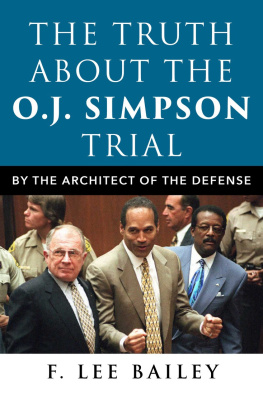

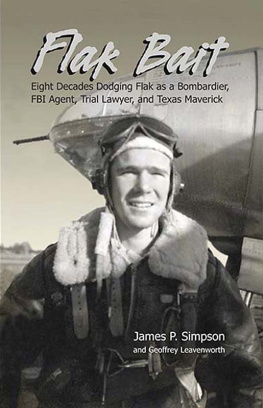


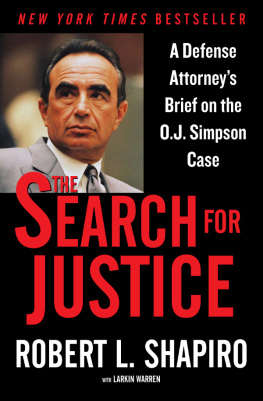
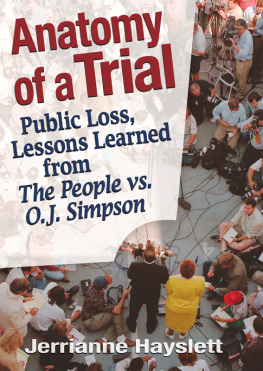
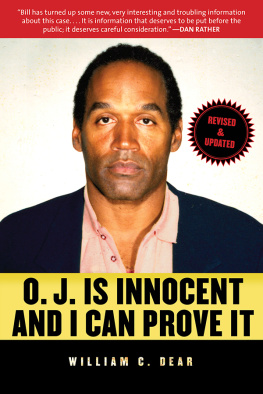
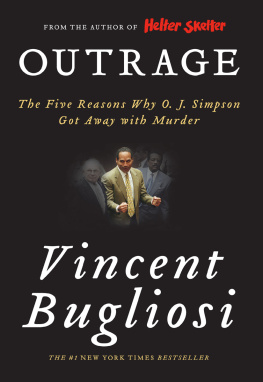

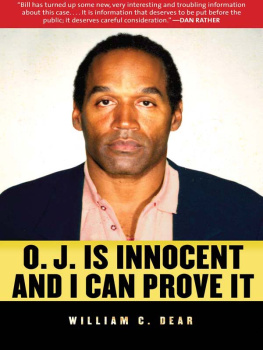
![Sadakat Kadri [Sadakat Kadri] - THE TRIAL: A History from Socrates to O. J. Simpson](/uploads/posts/book/57415/thumbs/sadakat-kadri-sadakat-kadri-the-trial-a.jpg)


